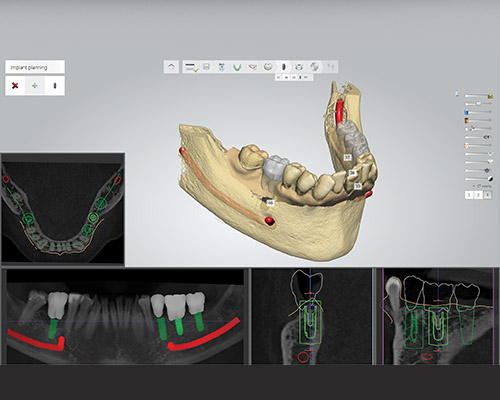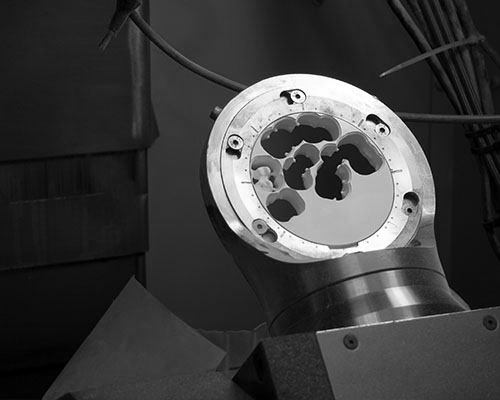"Digital Dentistry" means the fabrication of dental prostheses from digital or analogue impressions using digital technologies.
A general concept of digital dentistry and some examples of the use of digital technologies in dentistry:
Digital dentistry replaces or complements traditional dental procedures by using digital technologies. These technologies allow data to be captured in digital form, analyzed and used for more accurate planning, so that appliances, instruments and other aids can be used to produce certain prostheses more accurately and efficiently.
FlexDent has seen the future in digital dentistry since its inception in 2006. Over the years, we have kept pace with developments, finding the right partners and acquiring the necessary tools and expertise to produce high-quality work. We use and apply this daily in our Milling Centre and Digital Lab.


Some examples of digital dentistry applications:
CAD/CAM systems:
With computer-aided design and manufacturing (CAD/CAM) systems, dental technicians are able to design and fabricate dental prostheses such as crowns, bridges, and screw-retained and temporary dentures, based on digital impressions of the patient's teeth and mouth.
These can be CNC milling machines, Laser Sinter - and 3D printers. In the FlexDent Milling Centre and Digital Laboratory, they have been performing excellently for many years.
3D printing technology allows the production of prostheses and dentures directly from digital designs. Digital dentistry offers many benefits for both dentists and patients, such as more accurate results, shorter treatment times and improved patient comfort. However, it is important to note that the available technologies and applications are constantly evolving, so we make it a point to learn about them to be aware of the direction and applicability of developments. In parallel, of course, our colleagues undergo professional training to master and safely apply these new technologies.

